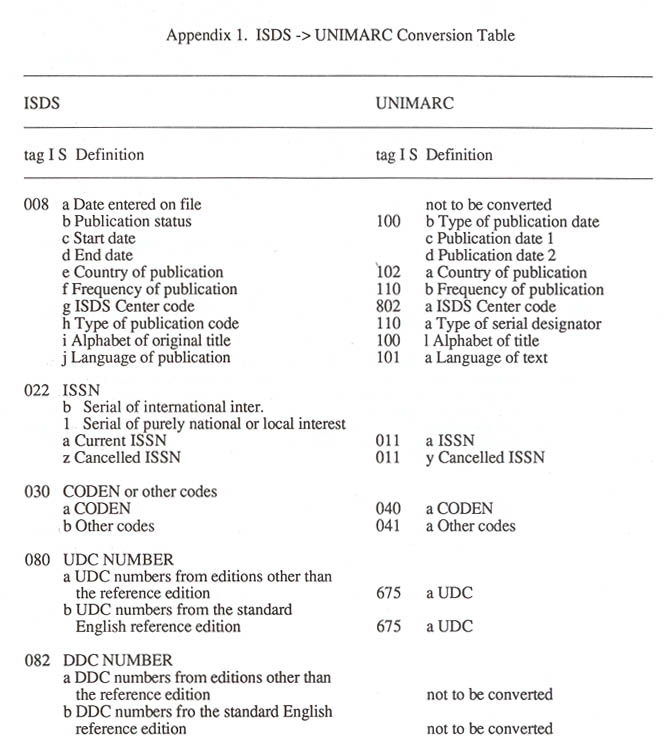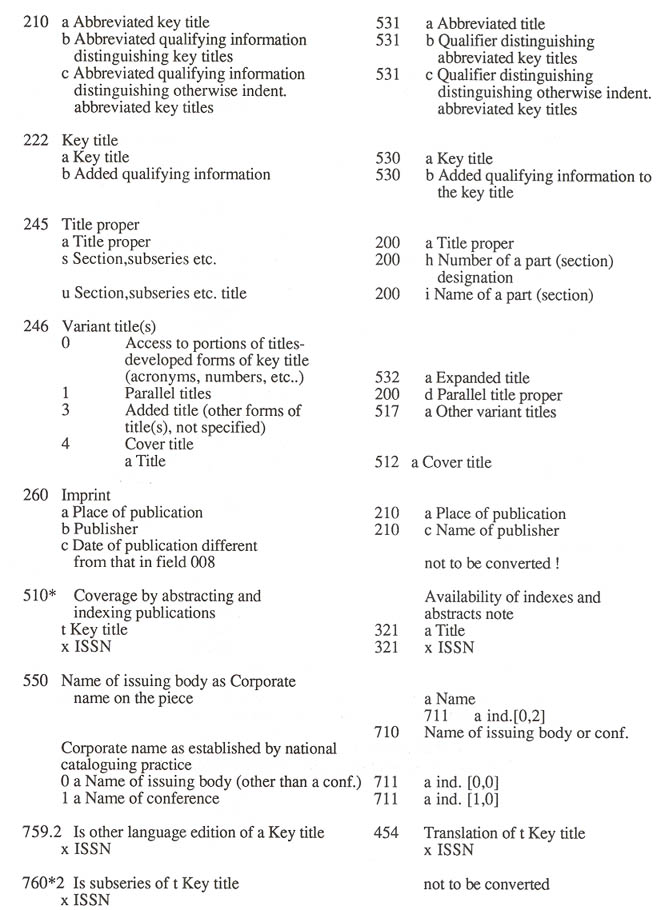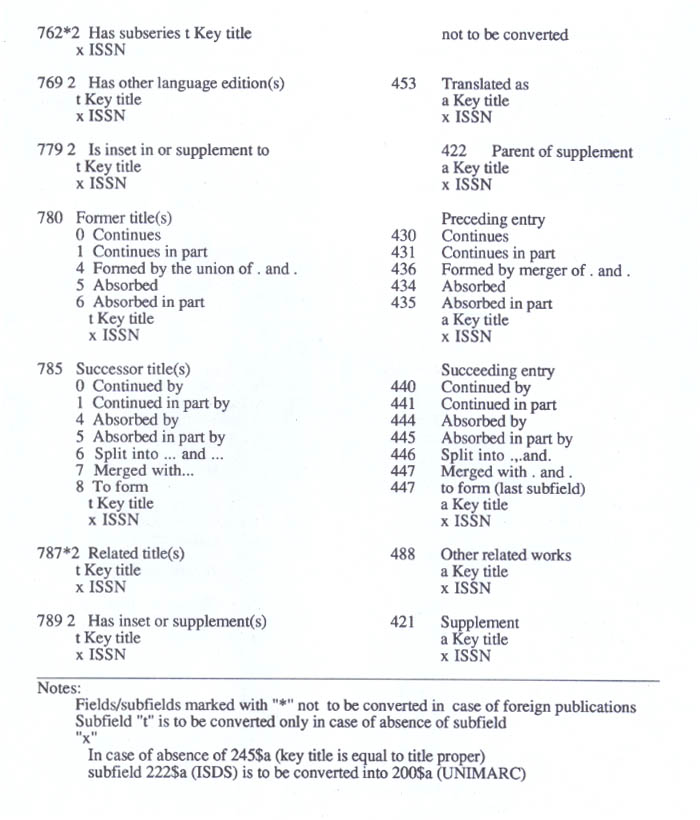


Gordana Popovic-Boskovic
National Library of Serbia
Belgrade, Yugoslavia
Ljiljana Kovacevic
University Library "Svetozar Markovic,
Belgrade, Yugoslavia
Abstract: At the end of 1987 the Yugoslav National Libraries Association accept-ed the system of shared cataloguing as a unique basis for computerized library information system of Yugoslavia. Yugoslav Bibliographic Database (YUBIB) has been developed and maintained as a shared database of national, university, spe-cialized, public libraries and other institutions. While the local databases on local computers have been created and updated by individual institutions, the YUBIB database located at the IZUM information service appears as a product of simul-taneous process of shared cataloguing system.
On-line union catalogue of foreign and significant Yugoslav serial publications (UCS) has been formed on the common level and, from the user's point of view, it works as the logical entirety. It has been compiled conversing the certain number of serial publications' databases out of republics' or autonomous provinces' libraries.
While compiling the bibliographic file, we dedicated the ISDS database to be the instrument of authority control. As the compatibility of the system was to be based on the use of UNIMARC input format, the necessity of making the "ISDS to UNIMARC" conversion tables was comprehended. In spite of the general idea on ISDS data integration into UNIMARC input format, we identified a number of problems. The conversion program, based on ISSN number, succeeded in a low percentage of 45-55%. As the main, relatively significant reason for that failure, we identified the large number of serial publications with no ISSN added, as well as those with irregular ISSN, or even irregularly registered ISSN.
By choosing the ISDS for the authority file, we provided a relatively high rate of serial publications' uniform identification, the completeness of data for each title, the consistency of database and, at last, the spare of librarian's work in record compilation process.
The paper will present the detailed information on UCS structure, principles of input datas' quality determination and recognition and at last, but not the least, the further development's prospects when all the participants are forced to reconsider the system organization in whole, and their own role in it.
The development of Union Catalogue of Serials (UCS) has been quite delayed in Yugos-lavia, compared with the progress that was going on in the rest of Europe, particularly in the countries presumed to be the leaders in the new technology's implementation processes, concerning development of bibliographic databases.
Hence, this article will not present applications of any of new or less known technologies, but will try to expose one of the possible solutions for work organization problematic, which is undoubtedly the part of each implementation process. Up to 1990, which was the year when online software support for UCS within the Yugoslav Scientific and Technological Information System (YSTIS) programme became available, all the attainable and relevant data for UCS have already been collected and maintained by national/university libraries, as well as by some specialized institutions (e.g. Biomedicine Informations System). The data have mostly been preserved on classical media, while a few databases have been created and used in their owners' local systems. The serial publications' data access was limited on the users who would visit the institution-creator, aside for certain cases when data were available as a hard copy.
Considering the problem on the whole, we could say that those databases (although not undermining their significant contribution in collecting and disseminating process) could be notified as inconsistent and with certain shortcomings, such as:
• unsatisfactory updating of data input,
• lack of the criteria for denoting the relevant facts on certain data,
• unsatisfactory possibilities for precise documents' identification,
• limitation in data' accessibility (except for the users visiting the data holding institution),
• lack of unique and complete holding data
Thus, the existence of an unique information to be used and shared among all the libraries and information centers was out of question.
2. UNION CATALOGUE OF SERIALS' DATABASE
Recognizing all existing shortcomings caused by the way that serials publications' data have been taken up, and presuming the necessity of having the current and correct data available to users, it was understood that very special attention had to be paid to encourage the creation of online Union Catalogue of Serials (UCS). In starting the development of this database, the following aims were defined:
• To collect and disseminate data on both domestic and foreign serials, located in the YSTIS institutions,
• to offer information on holding data of serial publications,
• to rationalize acquisition,
• to facilitate lending and interlibrary lending.
The UCS's database has been formed within the distributed data input process, and in-cludes the following data:
• bibliographic database - holding data
• adjoined institutions' data
Concerning online UCS, which is developing as a result of shared cataloguing, i.e. distributed data input (several places and institutions), the lack of serial publications' unique identification control would be harm for the project on the whole.
Accepting the characteristics of bibliographical description, in a way those are used in cataloguing practice, as being relevant for the quality of bibliographic information, it was decided to proceed applying ISBD(s), as well as UNIMARC which has been adopted in 1986. to be the national format for bibliographic data input. Because of the satisfactory practice hold in several countries (France, Scandinavian States, Hungary, Denmark, Spain), which had used ISDS file for their union catalogues, the concept was accepted as the one, capable to provide sufficient conditions for unique identification.
3. AUTHORITY CONTROL PROCEDURE
ISDS database was dedicated to be the normative one, whereas ISSN was defined as a database's control source. In order to realize those aims, it had been worked on:
• Installing the ISDS database on Information service,
• Converting ISDS to UNIMARC.
The conversion was worked out with the conversion table as shown in Appendix 1, created according to the ISDS Manual (Paris 1987) and UNIMARC Manual, 4 ed. (1987).
4. CONVERSION RESULTS
In spite of common supposition that in UNIMARC have been included all the ISDS for-mat fields, we faced a number of problems:
• ISDS is focussed on the "history" of serials - on the other hand, UNIMARC is focussed on the bibliographic description. Even the fact that in the last edition of UNIMARC Manual the fields 43x and 44x have been included, has not solved the problem in the whole.
• The indicators' meaning of certain fields couldn't be straightly converted, because ISDS and UNIMARC accept the indicators' defined information in a different sense. 246$0 (access to portions of titles developed forms of key title, acronyms, numbers, etc.) has been converted into 432$a (title developed forms) without indicator "s" because ISDS can't identify the dif-ference between acronyms, numbers etc.)
• By interpreting the purpose of certain tags, their widest meaning have been considered as to be the most adjustable to the demands of ISDS. ISDS 759 (is other language edition of)
-> UNIMARC 451 (original).
The second phase in realization of our assumed on-line UCS, was an integration process. The uniform database has been formed out of existing union catalogues' data (on magnetic media).
Two problem groups were remarked:
• Completely different and unstandardized formats for bibliographic data input, what seem to be the problem that we could hardly overcome. The problem increased up to the grade where several centers gave up the conversion of their databases;
• We faced the existence of great number of records with no ISSN included, and of those with irregularly registered ISSN (incompatible to the data in ISDS database).
Some analytical research has been done, after conversions of two databases had been completed. Those were the databases of Slovenian UCS and Macedonian UCS. Hence the analysis has helped us to establish the similarities in data's structure, in spite of that significant difference in databases' volumes as we had in "Slovenia - Macedonia" case: 16,480 records collected in Slovenia compared to 2,301 records collected in Macedonia as shown in the following:
UCS in Slovenia UCS in Macedonia
Converted 60,18% 53,28%
Without ISSN 31,75% 35,38% Irregular ISSN 1,78% 2,69%
Not included in ISDS 4,98% 8,30%
Missing holding 1,32% 0,35%
What so ever, the "bolded" fact about approximately 33% of the records without ISSN included, made us reconsider the present hypothesis of ISDS system being country-wide used - even more, the rationality of our concept as the whole.
On the other hand, the sample of 40 titles (converted as the records missing ISSN) showed good chances for those missing ISSN to be recognized in ISDS database - 19 of 40 were found. Yet the reasons for that high rate disagreement of UCS and ISDS databases, concerning ISSN, had to be recognized. So we identified following:
• At the time of bibliographic record's creation, the data on it's ISSN may have not been attainable to the librarian in charge;
• ISSN may have not been indicated on the publication;
• Librarians whose practice had hardly attached ISSN at the time, had not been cautious and attentive enough to detect and input the number in the record.
Any additional conversion, presuming a second control key picked up from title and res-ponsibility data group would not increase the percentage of correctly converted data for more than 10%, but would by all chances, contribute to the confusion (considering differently defined data in those databases). It was decided that all the records that have not been converted under ISSN as a control key would be manually converted - to ensure the reliability.
5 CONCLUSION
Finally, the essential question has surfaces. Is the concept of choosing ISDS for our authority file, actually a good one? The answer is YES!
Nowadays, under the circumstances of increasing productivity of serial publications, it's almost impossible to maintain the database's uniformity, neglecting all of authority data. ISDS database is, in any case, considered to be the authoritative one, offering the uniformity by identifying each serial publication once, with the help of it's ISSN and the key title. However, several existing limiting factors are to be overcome during the work organization process:
• The first to be mentioned is rather frequent occurrence of missing ISDS records con-nected to the publications registered in UCS. That could be reduced by assigning some uniform numeric marks to each from the group. Those are to be of similar structure as ISSN is:
- Temporary YU-ISSN number, for those serials for whom we expect International Center ISDS can provide an authority record from the corresponding national ISDS center. This number is being assigned by YUBIN - our national member of ISDS;
- local number for the serials of local interest, not of ISDS interest. This number is being assigned by the library which is a record creator;
- ISSN and temporary record for domestic serials which have not been registered in ISDS for any reason.
• The second problem arises when the librarians start their training courses for ISDS database usage. Key title, as an artificial form occurs to be a problem to the people who have never had any practise on ISDS database.
• Finally, the consistence and the compatibility of our UCS system, is based on the uni-form technological foundations, the uniqueness in management, and the possibility of updating, maintaining and controlling our, not so voluminous, database. One should actually have in mind that Yugoslavia had registered not more than 25,000 titles per year for the last ten years period (1980-1990). A rational solution for that data amount is presented in uniform database foundation which could be considered as a set of smaller entireties, depending on regional needs.
On the very end, we should pay some attention to the circumstances that imperil our organization system's database. So, we've come to the point from where some new relational grounds are to be developed. In spite of everything, it is undebatable how our associated work has contributed to the Yugoslav library management on the whole. It also provided a higher level of efficiency for the dissemination of informations.
Therefore, the common aim -- to provide feasibilities to exceed all limits, maintain the attained level and overcome the crisis -- for all the participants in UCS system's development is recognized.
REFERENCES
ISDS Manual, Paris, 1987. 2
Priru~nik za UNIMARC, Zagreb, 1989.
Seljak, Marta - Urbajs. Alojz: Model of of-line Union Catalogue of Serials in the YSTIS. Maribor, 1990.
Whiffin, Jean. Union Catalogues of Serials: Guidelines for Creation and Maintenance with Recommended Standards for Bibliographic and Holdings Control. New York, 1983.


